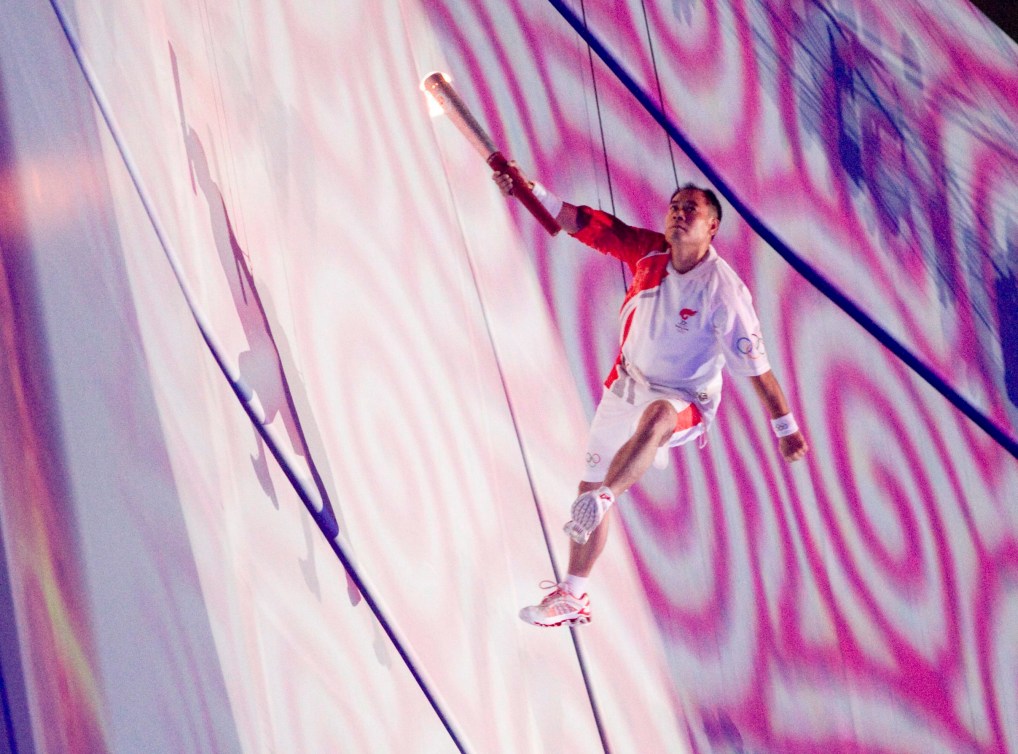Favourite Opening Ceremony moments from past Olympic Games
With each Olympic Opening Ceremony, inevitably, there are comparisons to the ceremonies that came before. But unlike what we watch over the following 16 days, it is not a competition.
Each Opening Ceremony stands on its own merits and memorable highlights. Here are some of my favourite moments from more than three decades of being an Olympic fan.
Barcelona 1992
My memories of Seoul 1988 are vague at best, so I’ll start with Barcelona 1992 which had one of the most creative cauldron lightings ever when Paralympic archer Antonio Rebollo shot a flaming arrow high into the night sky.
But before that, the Parade of Nations was historically significant. South Africa was back at the Games for the first time since 1960 following the end of apartheid. There was one reunified Germany after the fall of the Berlin Wall. The Soviet Union was no more, allowing Estonia, Latvia and Lithuania to march independently while the remaining republics formed the Unified Team. It was a time of major change in the geopolitical world and the Parade of Nations reflected that.
Atlanta 1996

The Atlanta 1996 Opening Ceremony had two standout pieces of music.
If you’re young enough, you may only recognize Summon the Heroes as an Olympic theme, not as the orchestral piece composed especially for the Games by the incredible John Williams.
And before she took the U.S. by storm with the Titanic theme My Heart Will Go On, Celine Dion powered through the Power of the Dream, written by fellow Canadian David Foster.
But of course the climax was when Muhammad Ali took the torch handoff from swimmer Janet Evans to light the Olympic cauldron.
Sydney 2000
The music from the Sydney 2000 Opening Ceremony was so good that I actually bought the soundtrack on CD.
It had perhaps the best performance of any national anthem ever, a beautiful rendition of Advance Australia Fair by Julie Anthony and Human Nature accompanied by the Sydney Symphony Orchestra.
Vanessa Amorosi hit notes I didn’t know were possible in Heroes Live Forever as a giant sheet used as a projection screen crossed over the athletes.
Tina Arena was equally outstanding in singing The Flame to welcome the torch relay.
And there was another inspiring cauldron lighting courtesy of Cathy Freeman standing in a circular pool of water.
Athens 2004
What sticks out in my memory of Athens 2004 is the unique situation in the Parade of Nations. As the first Olympic host, Greece always marches first. But as the current Olympic host, Greece was also supposed to march last. How to solve that problem? Flagbearer Pyrros Dimas led the parade and then went back to join the rest of his teammates at the end.
Beijing 2008
The Beijing 2008 ceremony was truly a spectacle. I think we all knew we were in for something special when the show began with 2008 drummers.
Later, the philosophy of Confucius and the evolution of Chinese characters, demonstrated by the perfect synchronized movements of 897 blocks, which (spoiler alert!) each had a person inside.
And then gymnast Li Ning was lifted high into the air on a wire and ran along the upper wall of the stadium while carrying the flame toward the cauldron which only came into view when he arrived.
London 2012
Oscar-winning director Danny Boyle’s Isles of Wonder was a truly wonderful start to London 2012, from the walk through British history, beginning with the green fields and live animals, before transitioning to the Industrial Revolution and into the 1960s.
Who could forget the water cooler moment when James Bond met the Queen at Buckingham Palace and the two parachuted into the Olympic Stadium?
Or Rowan Atkinson getting bored and dreaming his way into the iconic Chariots of Fire beach run?
Rio 2016
The Parade of Nations at Rio 2016 had a new addition — the Refugee Olympic Team composed of 10 athletes. There was an homage to the Amazon rainforest and the Indigenous people of Brazil. Model Gisele Bundchen strutted a catwalk through Maracana Stadium as The Girl from Ipanema.
Finally the cauldron was lit by 2004 Olympic marathon bronze medallist Vanderlei de Lima, and in a nod to environmental protection and climate change, the flame was much smaller in volume than at past Olympic Games. But its lighting was enhanced by a kinetic sculpture of spinning reflective spheres and plates.











